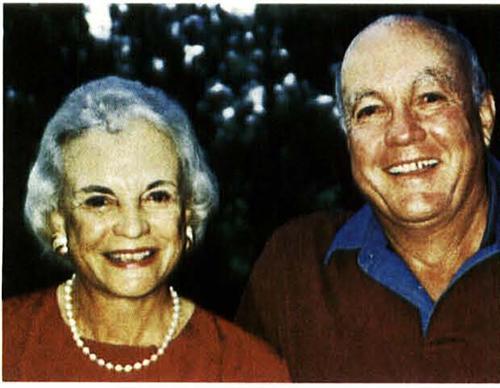Sign up for the Family Tree Newsletter Plus, you’ll receive our 10 Essential Genealogy Research Forms PDF as a special thank you!
Get Your Free Genealogy Forms
"*" indicates required fields
 Most any place provides better grazing than the sparse, open high desert country south of the Gila River on the border of Arizona and New Mexico. It was no country for sissies, then or now. Making a living there takes a great deal of hard work and considerable luck. Our family stayed there for 113 years.
Most any place provides better grazing than the sparse, open high desert country south of the Gila River on the border of Arizona and New Mexico. It was no country for sissies, then or now. Making a living there takes a great deal of hard work and considerable luck. Our family stayed there for 113 years.
H.C. Day, our grandfather, was a New Engender — shrewd, conservative, careful with his money, intelligent, not afraid to tackle new ventures. He worked on the family farm in Coventry, Vt., until 1865, when he turned 21. Then, a free man, he opened a general merchandise store on the Canadian border, some 10 miles north of Coventry. He made a nest egg and moved west to Wichita, Kan., a central hub in the westward expansion. In 1879, at age 35, he married Alice Edith Hilton.
The following year our grandfather decided to take advantage of the availability of public lands for the grazing of livestock in the New Mexico Territory. H.C. bought a herd of cattle in Mexico and put them on a parcel of land. The Mexican cattle were branded on the left hip with a B lying down flat. A brand lying down is called “lazy.” Lazy B Ranch it became, and so it remained.
The Day family stayed at the Lazy B for 10 or 12 years. H.C. then moved his family to Pasadena, Calif., and to a more comfortable life. In the summers, H.C. visited the ranch, taking our father, Harry, along, and supervised improvements to the wells, the building of windmills and fences, and the management practices for the cattle and horses. Harry learned at his father’s side, and he learned well. As we were growing up, we saw that nothing would ever be thrown away if it had any conceivable practical use. Nothing would be wasted.
Harry had planned to attend Stanford upon his graduation from high school, but World War I intervened. He was drafted and began training, but when the war ended, he was discharged. At that time, H.C. was ill and could not visit the ranch as was his custom. H.C. sent Harry to check on the ranch and report back. Harry did, but he had no happy news. In a letter to his sister Eleanor, written in November 1919, our father noted, “This certainly is a terrible place to live and I hate it here, but I will have to stay here a few months until I get some money ahead. I expect to go east from here.”
Harry never made that trip east. H.C. died in 1921, and grandmother Alice died five years later. In 1927, Harry went to El Paso, Texas, and bought some bulls from a rancher named WW. Wilkey. The Wilkeys’ daughter Ada Mae was there, and an instant spark ignited between Harry and Ada Mae. In September, they eloped, were married in Las Cruces, NM, and returned to the Lazy B to begin their life together in the four-room adobe house at the new ranch headquarters. Harry and Ada Mae lived the rest of their lives at the Lazy B. In time, they had three children: Sandra, Ann and Alan.
The power of the memories of life on the Lazy B is strong. It surges through my mind and heart often. Alan and Ann say the same. We know that our characters were shaped by our experiences there. The value system we learned was simple and unsophisticated and the product of necessity. We knew the ranch, its hills, its mesas, its canyons, its rocks, its soil, its climate and the life it sustained. We knew the vastness of the sky and our total dependence on the weather. We knew well our family, the men who worked there and their families. We belonged to the Lazy B, and it belonged to each of us.
From the August 2002 issue of Family Tree Magazine
ADVERTISEMENT

